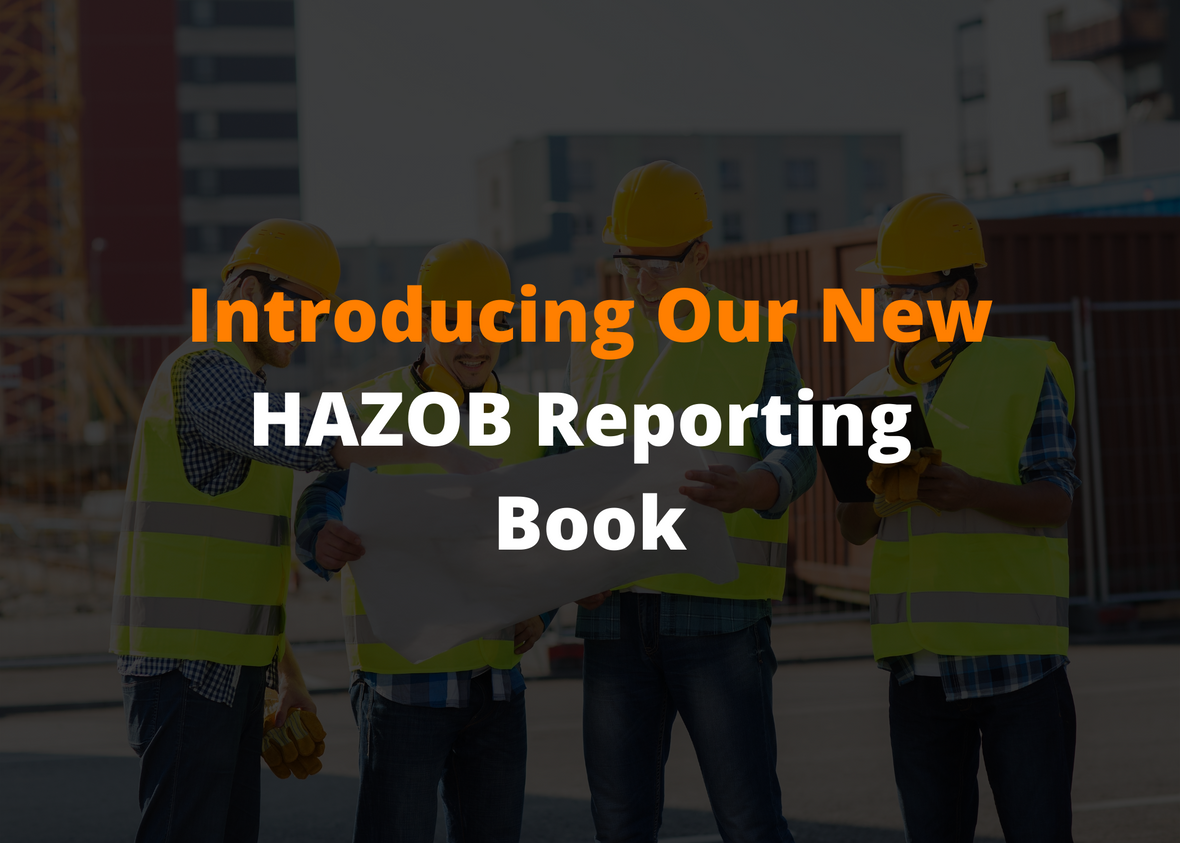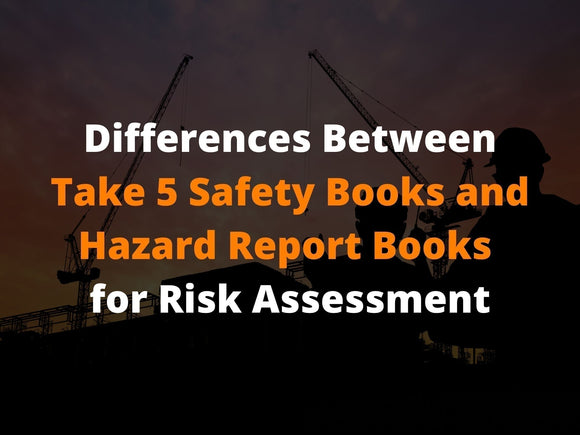
Introducing Our New HAZOB Reporting Book
UniPrint have a continued focus on providing safety resources to help businesses keep their people safe. We are excited to bring you our new HAZOB Reporting Book to add to our leading range of safety books and checklists. This is the ultimate guide to easily and safely identifying hazards in the workplace with the same trusted standard as our Take 5 products.
The new Hazard Reporting Book has been designed to help businesses of all sizes meet their Occupational Health and Safety (OHS) requirements, whilst ensuring workplace hazards are handled quickly and efficiently so everyone goes home safely at the end of the day.
What Is a Hazard Reporting Book?
A hazard reporting book is a structured book where staff can record hazards, so they can be minimised and managed in a safe manner. It has clear and consistent instructions on:
- How to identify hazards;
- Assess the risk;
- Manage the hazard;
- Proceed and monitor the hazard
It guides your team on what action to take and who to report to, as well as allowing your team members to be proactive in being able to report any risks or hazards in the workplace or on site. By having a structured and consistent way to report and record hazards, it allows for management to easily keep records and quality data on how hazards have been avoided or fixed in a timely manner.
Employees should never feel discouraged to report issues of safety. By providing an essential aid like this, staff are able to report any risks and ensure everyone's safety.

How and When To Use a Hazard Reporting Book?

All businesses have a responsibility to provide a safe working environment for their employees. This means ensuring that any potential hazards are identified and minimised.
Using the hazard reporting book is fuss free and can easily be incorporated into your hazard reporting procedures at your workplace. The books are clear and have step by step instructions on how to handle each risk as it arises, allowing staff to feel comfortable to raise any safety issues and be part of the solution.
If you decide to incorporate hazard reporting books into your workplace, they should book should be easily accessible and well-publicised, so that all staff are aware of it. They should be regularly reviewed by management and safety teams, so that any potential dangers can be quickly dealt with.
How Is It Similar or Different To Take 5 Books?
You might be familiar with our Take 5 books and checklists that help you to identify hazards before any work is undertaken on a job site. Using a similar step-by-step procedure, the HAZOB reporting book is for any hazard identified in a workplace at any time.
Not all areas have the need to complete a Take 5 checklist each day. But, using our hazard reporting book makes it easy to identify, access and manage potential risks in real time as needed. These books are a great way to bring consistency to office safety as well as areas already identified as high risk.
The new books have the same clear and concise structure and instructions as our Take 5 books for how to assess risks and how to proceed. They include the Hazard Risk Rating Table and the Hierarchy of Controls. Teams will be familiar with both of these to make sure risks are reported and rectified quickly.
They are simple to follow and simple to fill out to ensure staff aren't overwhelmed or put off by the reporting process.

Where To Order HAZOB Reporting Books
Whether you’re already using our safety checklists or not, this would be a great place to start or complement your existing safety procedures and checklists. UniPrint offers a range of printing options for your safety books and needs.
We know that not every work place is the same and they have different safety needs. At UniPrint we can customise your safety books and checklists to suit your working environment. Contact our team today for your specific safety book requirements.


